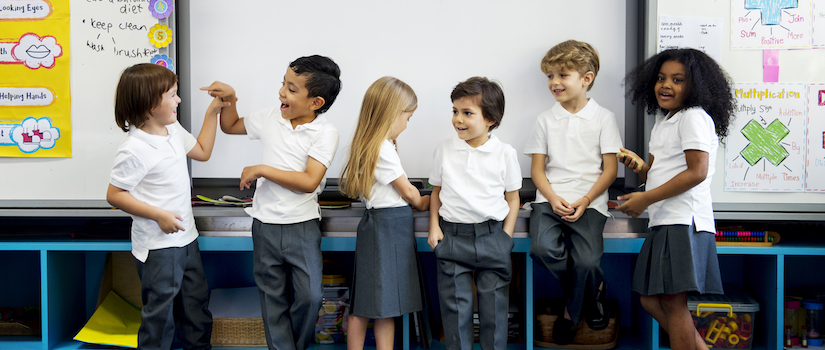Articles & Videos
Let the games begin!
Categories
Subscribe to our newsletters
Receive teaching resources and tips, exclusive special offers, useful product information and more!
Let the games begin!
Sound Waves Literacy 7/8/19

Inject some fun into your weekly spelling lessons with some of our favourite Sound Waves games. Whether used as a warm up or a fun way to wrap up the week, students will relish the chance to apply their spelling skills in an engaging and collaborative game.
As an added bonus, there’s minimal preparation required so you can dive right in. Ready, set, go!
Celebrity Heads
Aim
Students ask questions to identify a hidden sound.
What you’ll need
Sound Waves Sound Cards
How to play
- Choose three students to stand at the front of the class. Attach one Sound Card to the board above and behind each of the standing students so they cannot see them but the rest of the class can.
- The three students take turns asking the class questions to identify their sound. Questions can only be answered with yes or no.
- If the class answers yes, the student continues asking questions until the class answers no. If the class answers no, it’s the next student’s turn to ask a question.
- The winner is the first student to correctly guess their sound.
Tip
Give students examples of what questions to ask. For example, starting with the question ‘Is it a consonant sound?’ greatly narrows down the possibilities. Other helpful question types include: Is the sound in my name? Is it in Tom’s name? Is it in the word chin?
Lower years variation
To reduce the breadth of choice for lower years students, select three to five Sound Cards. Ask the class to say each of the selected sounds. Nominate just one student to stand at the front of the class. Attach one of the Sound Cards to the board above and behind the student. From here, the student asks questions to identify the sound.
Guess the Phoneme
Aim
Students identify the common sound in a series of words.
What you’ll need
Just a class of eager students – this game requires no additional resources, which makes it perfect to play anytime.
How to play
- Say a series of words that share a common sound. For example: best, rubbed, table –
 ; stretch, berry, break –
; stretch, berry, break –  .
. - Students take turns identifying which sound the words share.
Tip
If you’re struggling to think of words containing the same sound, simply flip through a Student Book and use sets of Focus Words from various units.
Lower years variation
Stick to single-syllable words and adjust your questioning to suit your students. Ask about initial sounds first, then final and then medial. For example: king, cat, catch (initial ![]() ); rain, pan, been (final
); rain, pan, been (final ![]() ); tick, pin, will (medial
); tick, pin, will (medial ![]() ).
).
Upper years variation
Use more complex multisyllabic words where the position of the sound varies. For example: stuck, crater and soccer.
Sound Blends
Aim
Students identify sounds for Sound Boxes and blend them together to form a word.
What you’ll need
Sound Waves Teaching Charts
How to play
- Choose a category for the game, such as students’ names.
- Point to the Sound Boxes on the Sound Waves Teaching Chart that correspond to a word from that category. For example:


 for Dean.
for Dean. - Students say the sound for each Sound Box, then blend the sounds together to say the full word as a class.
- Play again with another word.
Tip
Some great categories to use are animals, colours, months of the year, sports or a topic you’re covering in another subject.
Lower years variation
Stick to single-syllable words before moving on to two-syllable words. This is also a great way to practise blending Focus Words.
Upper years variation
Use more complex multisyllabic words and challenging categories, such as liquids or countries.
Bingo
Aim
Students write words from a designated list for their Bingo cards and circle the words as they are called.
What you’ll need
A list of at least 12 words that relate to a concept being taught in your current Sound Waves unit (rhyme, homophones, suffixes etc). Each student needs a laminated blank Bingo card, whiteboard marker and cloth.
How to play
- Students choose words from the designated list and write one in each of the empty rectangles on their Bingo cards.
- Read the words from the list in random order to the class, giving students time to circle each word if it is on their Bingo card.
- Once a student has circled every word on their card, they call ‘Bingo!’
Note: Using a blank template that students fill in, rather than a pre-filled Bingo card, ensures they read and spell words during this activity.
Lower years variation
Use a 6-word Bingo card and create a designated list with Focus Words only.
Upper years variation
Use an 8-word Bingo card and increase the number of words in the designated list.
Now that you’re equipped with four fun games to use in your spelling lessons, which will you try first?